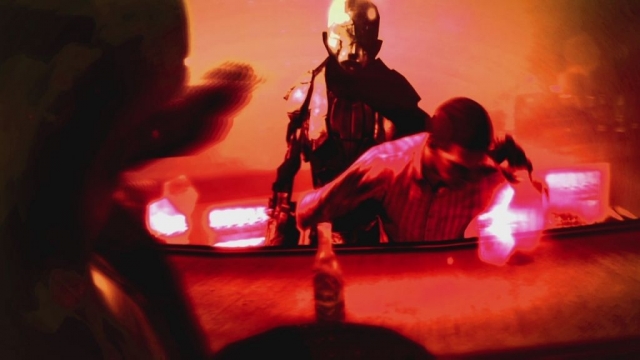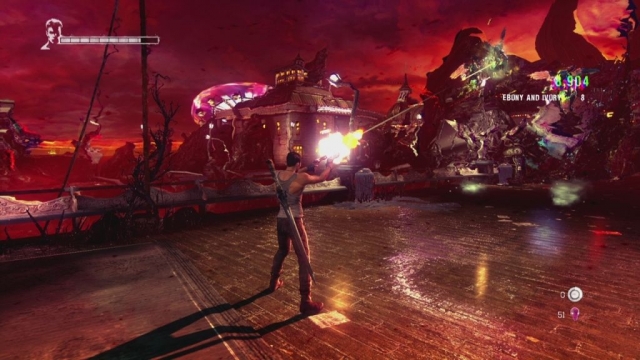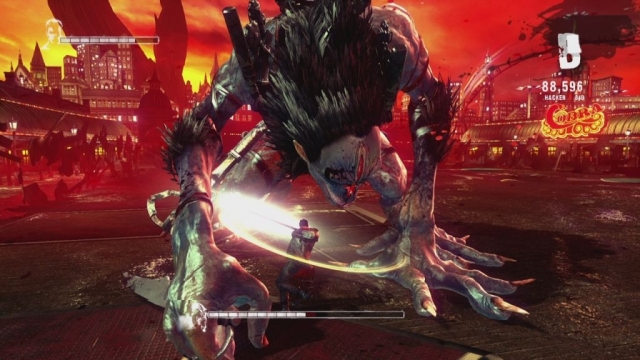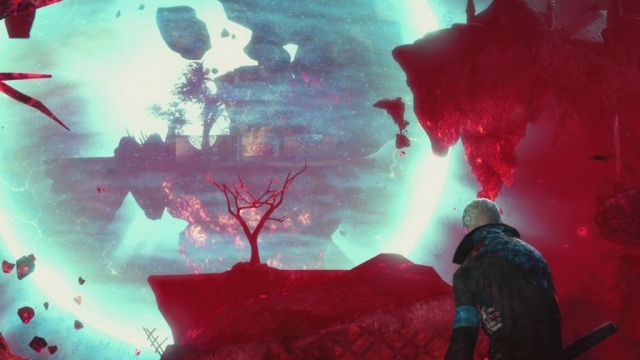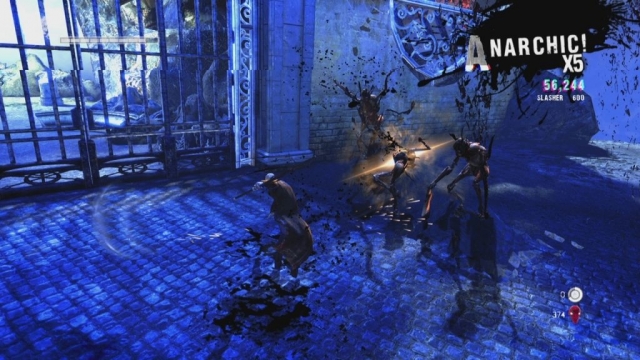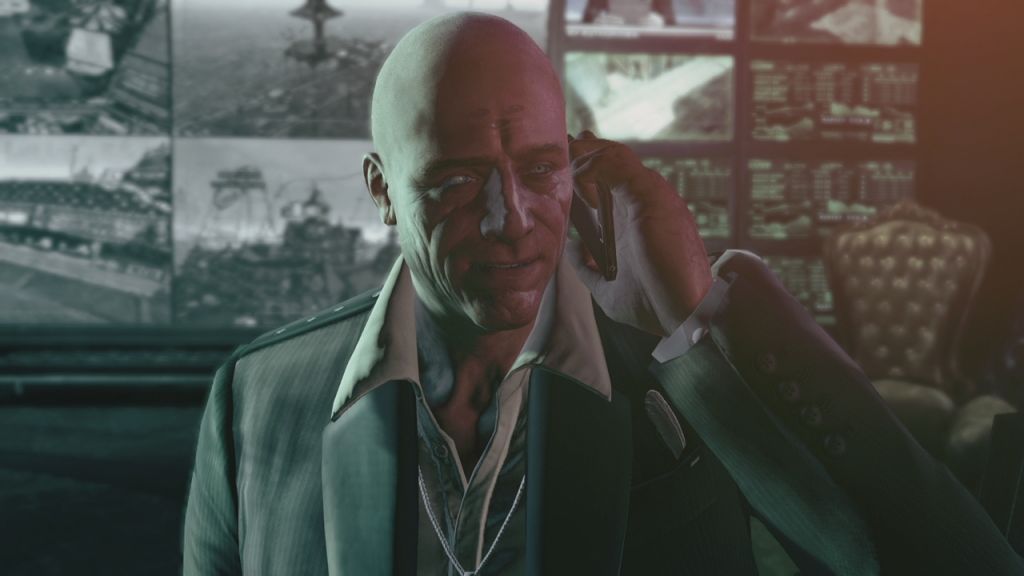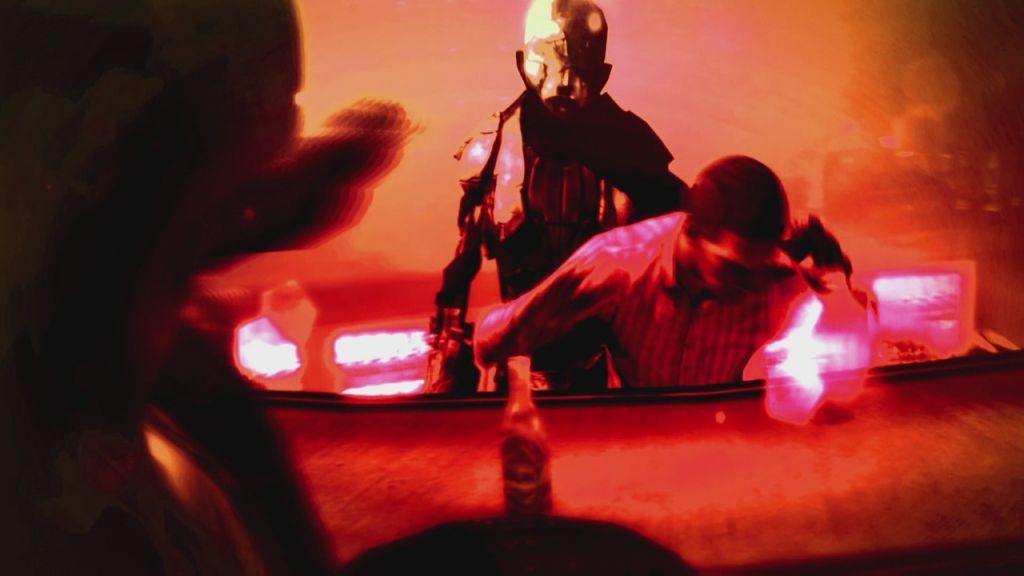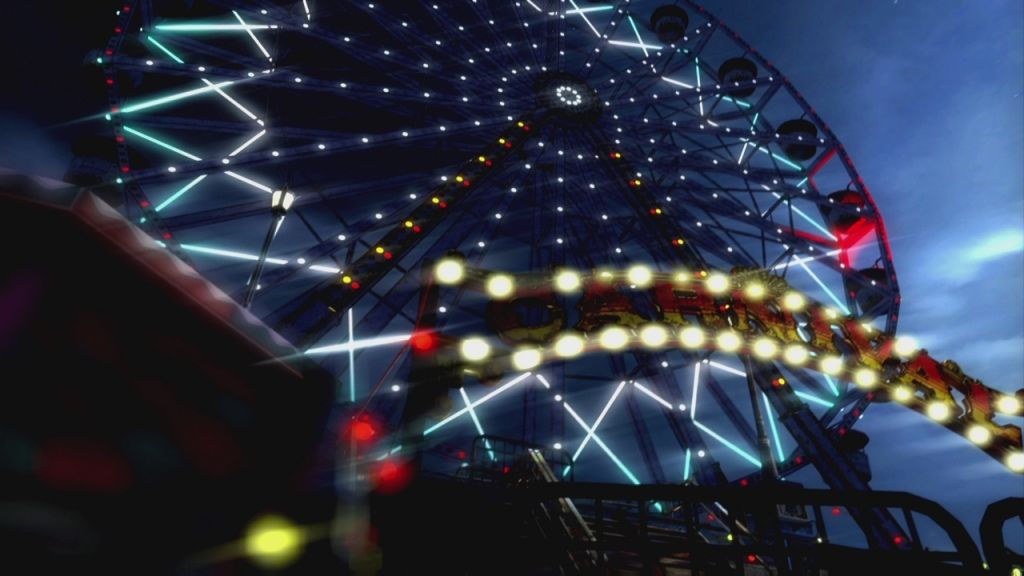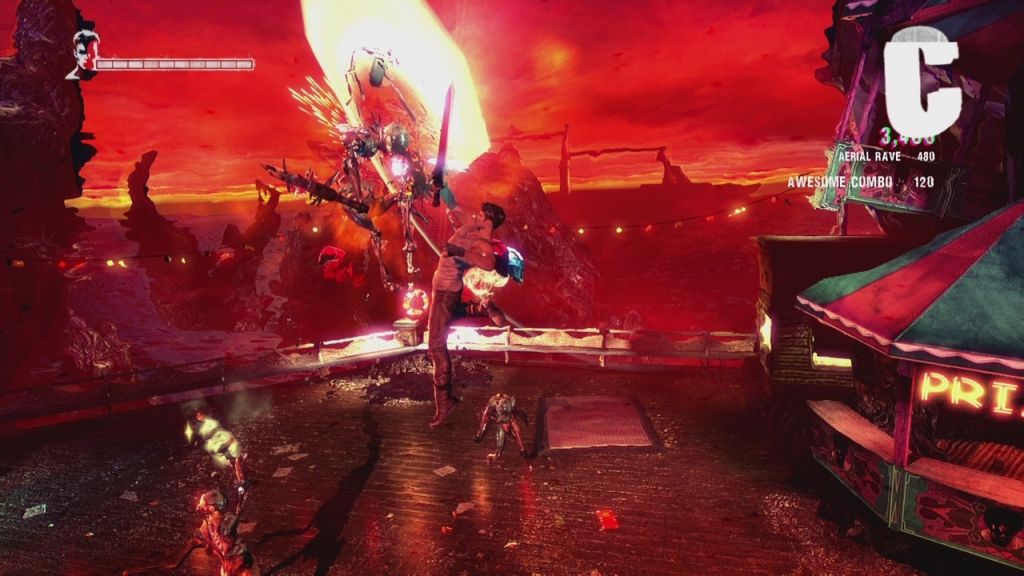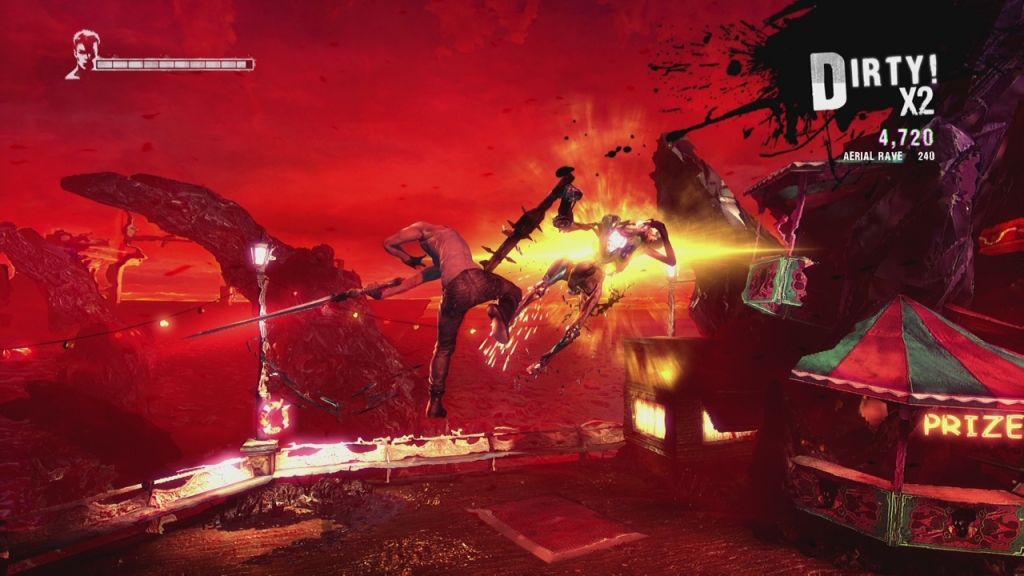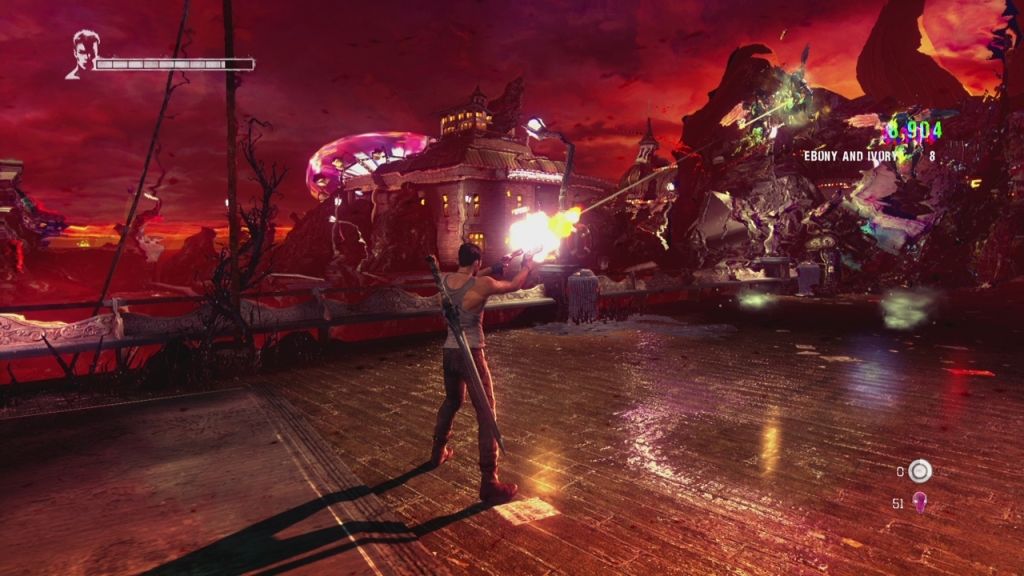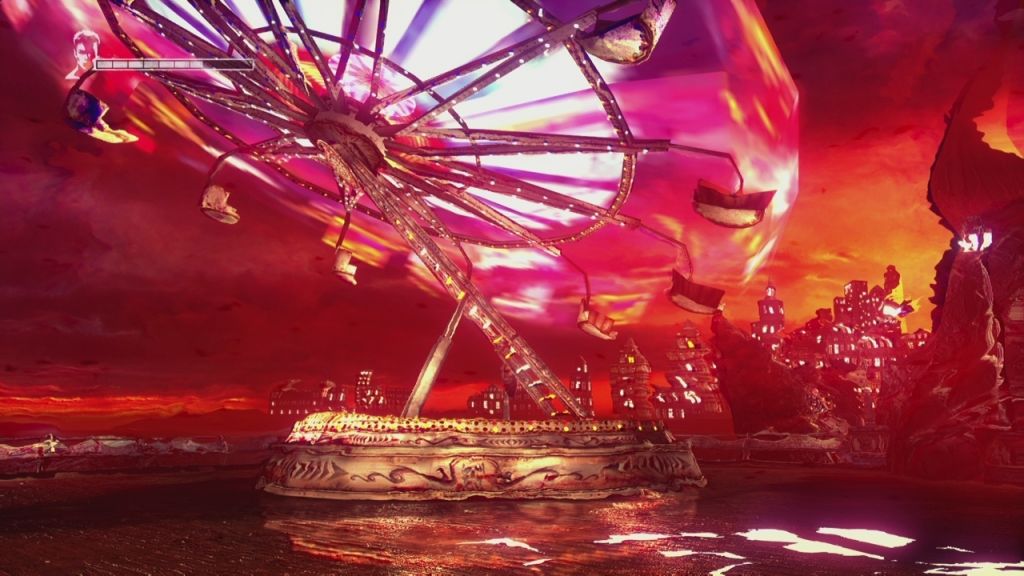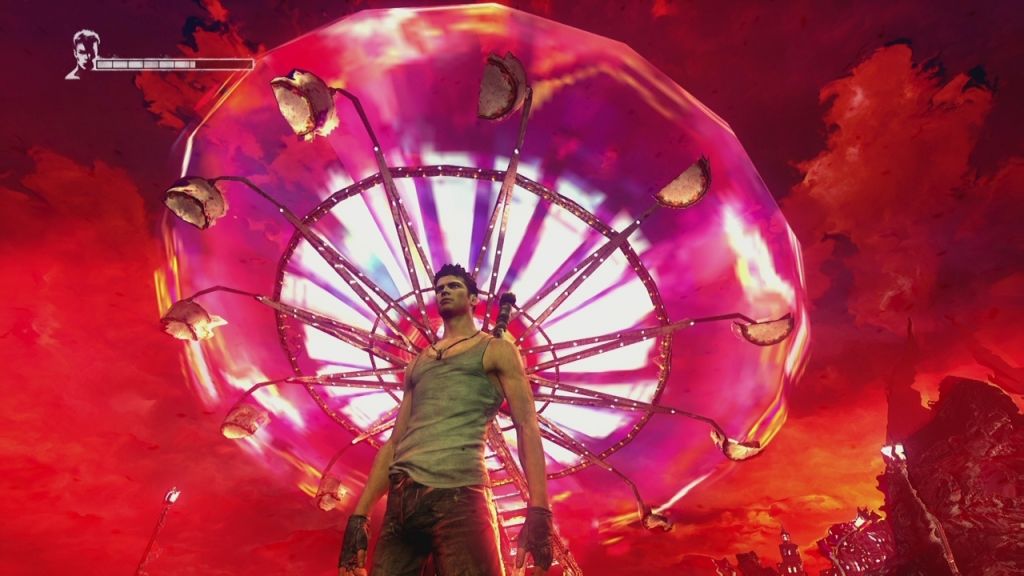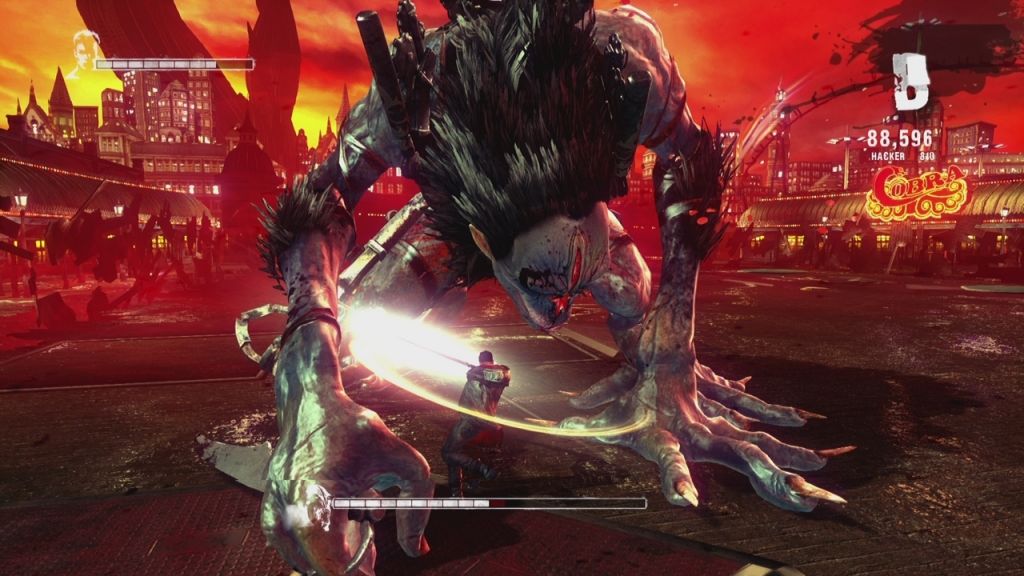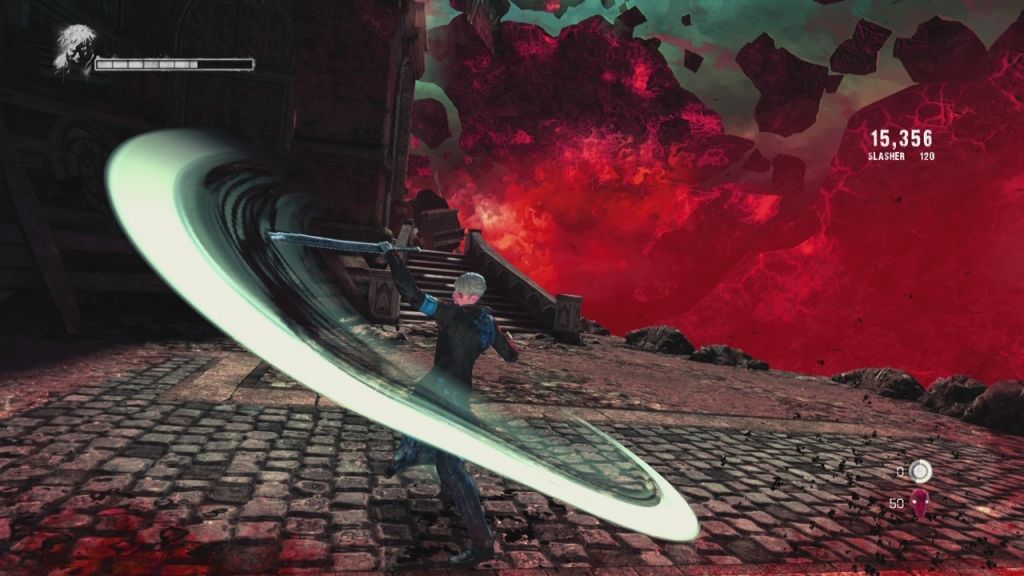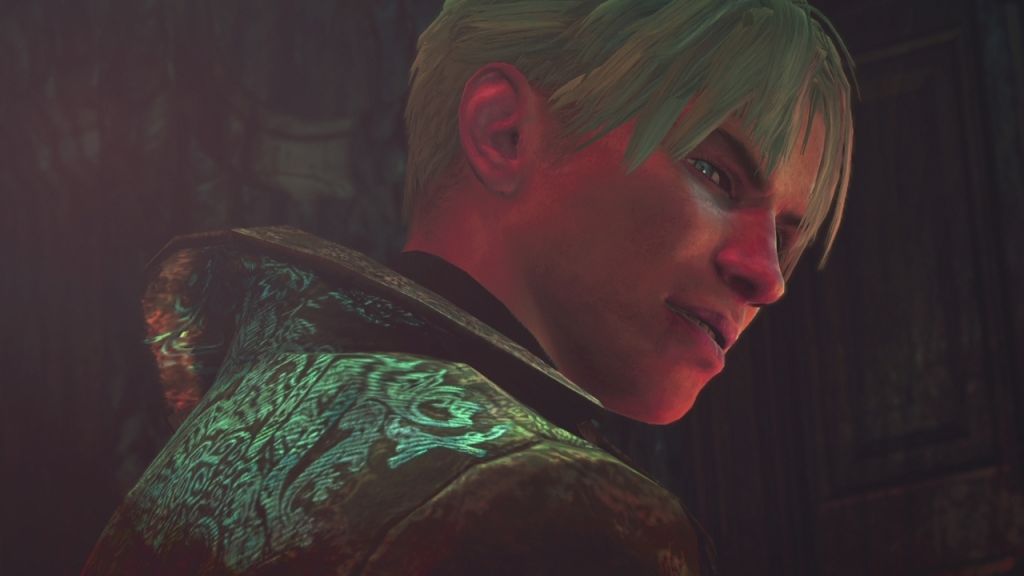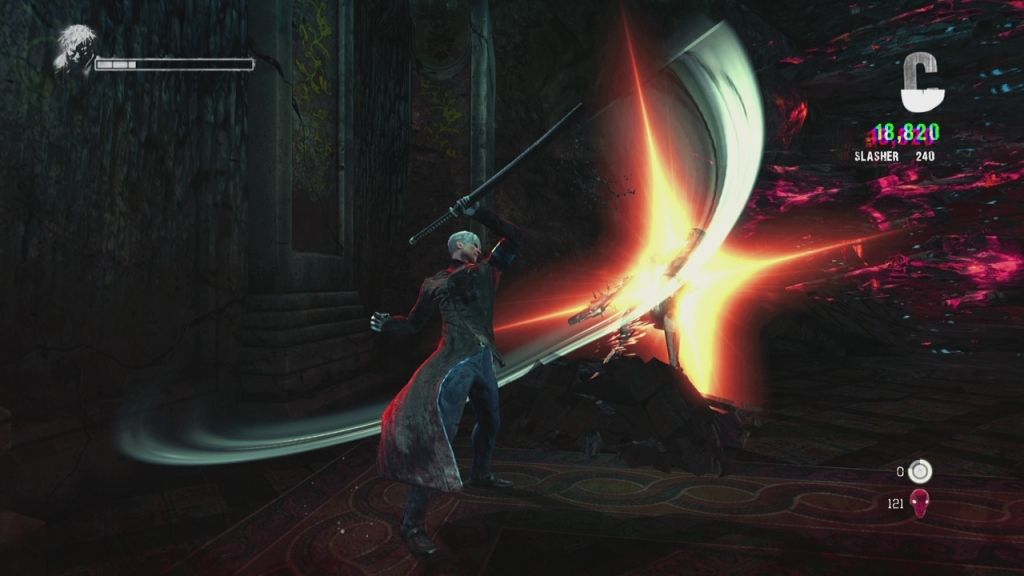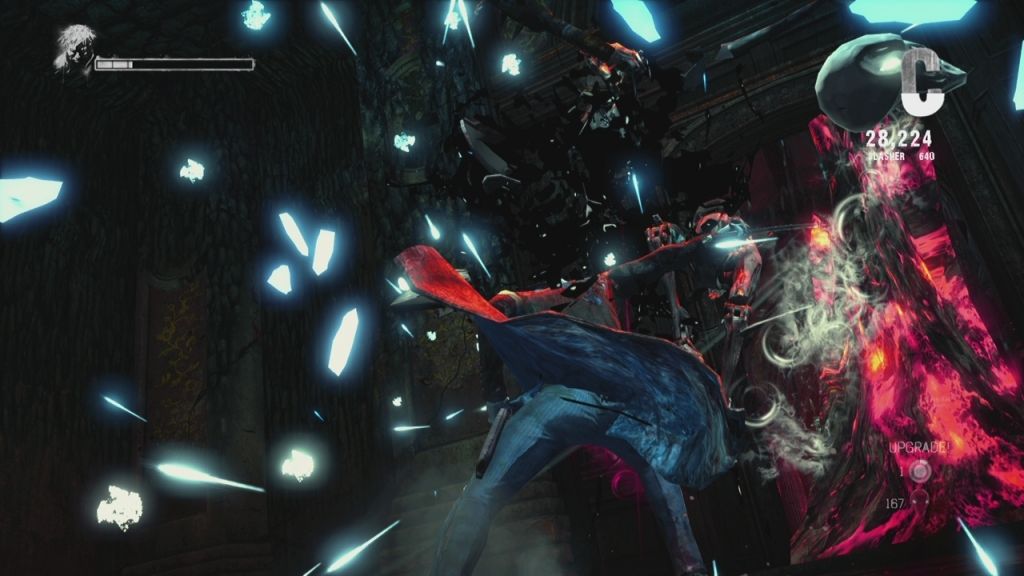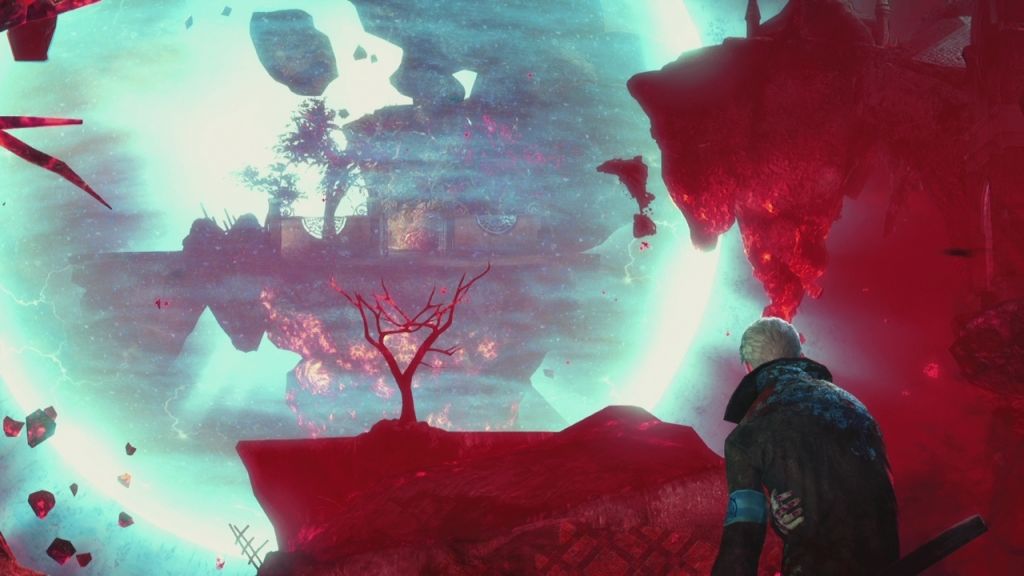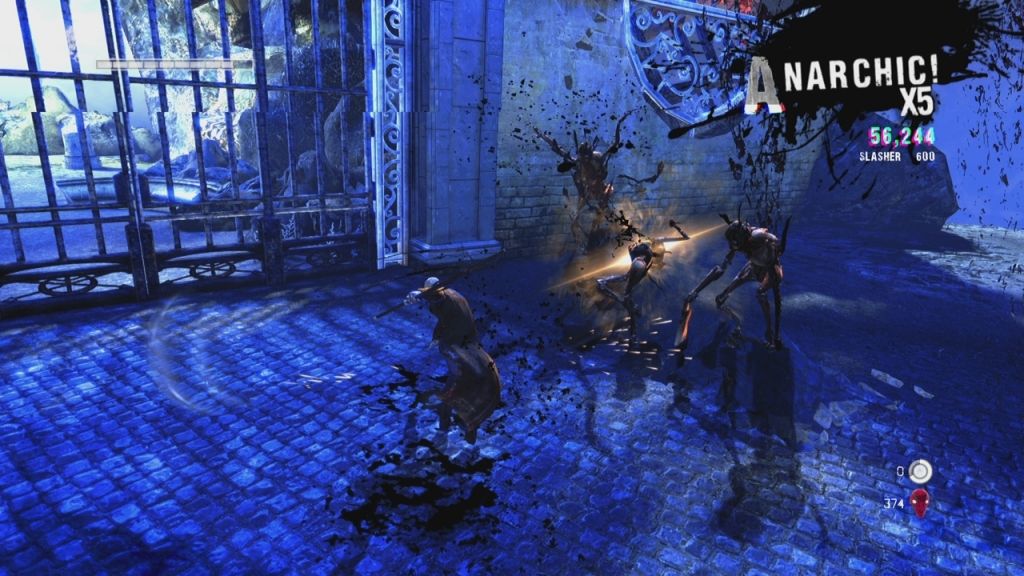DmC Devil May Cry: Definitive Edition
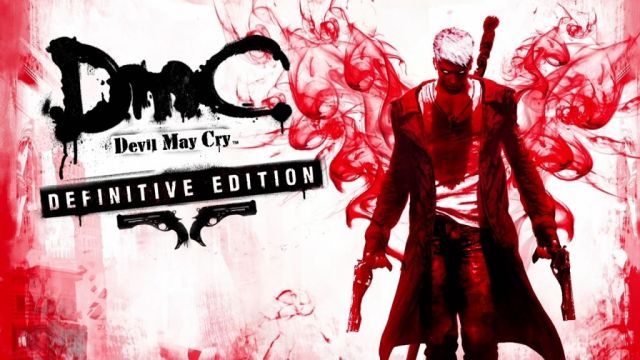
Two years ago, DmC hit last-gen consoles and PC to rave reviews. As someone who liked, but didn’t really love the original Devil May Cry trilogy, I absolutely adored the reboot. Now, time has passed and brought with it a new console generation that is sorely lacking in action-heavy games like this. Enter the Definitive Edition of DmC. Now running at 1080p and 60 frames per second, the action has never looked better on a console.
DmC was controversial since the second it was first shown to the public. Long-time Devil May Cry fans derided it for changing Dante’s appearance and even after its release, many seem to hold onto that one change as something that destroys the game. I was iffy about the game due to the changes, but after playing it, the changes made wind up working for the better in a nearly universal way. The original series was tongue-in-cheek – DmC isn’t and as a result, you wind up caring about the characters far more. The gameplay keeps the slicing and dicing/gunplay mix, but includes a variety of grappling hooks and gives you more weapons and tools at your disposal than the original series.
The storyline revolves around Dante going from a club-hopping guy attacked by a goon squad sent by a super-evil (and ugly) bald businessman the morning after some fun…while nude… having to quickly grab both clothing and something to defend himself with. Swords come in handy during monster attacks, so he’s able to survive there and then come into contact with Kat. She’s a medium who informs him that he’s in limbo – doing tons of damage to the real world and giving an ultra-opinionated newscaster material for his anti-Dante agenda. After that, you find out bits and pieces of Dante’s history during the levels and eventually find his brother Vergil and learn what happened to their parents – something that changes Dante from an immature lost soul into a determined ass-kicker and demon-slayer.
Blending storyline progression into the main game works really well and allows you to care more about what you’re doing. I found myself wanting to play better just so I wouldn’t die and thus increase the amount of time between cutscenes. The only flaw with this setup lies in not being able to skip through the cutscenes. While you wouldn’t want to do that for your first playthrough, if you’re trying to go through stages on a different difficulty level to either unlock abilities or test yourself, it would be nice to skip through the story parts and since you’re unable to do that, replaying stages is slightly discouraged as a result.
It’s still a blast to replay them though, or play through them for the first time since the gameplay is so tight. In keeping with one parent being a demon and the other an angel, Dante is able to use an angelic scythe and grappling hook to swing from, while his demonic side makes use of a hook that brings things towards him and A GIGANTIC AXE. Since Dante’s already got the sword and guns from his human side, you’re effectively able to blend the three distinct parts of Dante’s life into one red-clad killing machine, and it’s great way to merge the narrative with a reason behind suddenly getting new items.
Having all of these things at your disposal makes every combat area you’re in a blast since you can alternate between the items at any time, mix and match them, and figure out which item works best for a given situation. If you’re surrounded by enemies, the scythe comes in handy, while the axe will lay waste to anything shielded and the sword may lack some of the sickle’s range, it’s a bit faster to use. The guns come in handy for keeping combos alive or starting them before slicing and dicing. Later, you’ll unlock some sweet items like magma fists that allow you to punch holes in things not only in the stage they’re unlocked in, but also before – much like how you’d be able to find hidden things in a Mega Man game using a boss’s weapon. The sweetest unlock comes in the form of the stick button-activated Devil Trigger mode that turns Dante into a white-haired variant of himself and paints the world in an extreme almost comic-style due to the saturation while enemies float waiting for death. It’s super-flashy and fun to use.
The combat side of the game is largely fantastic, although you have so many ways to attack that you wind up not only needing the face buttons, but also the triggers and the d-pad to cycle through them all. It’s a bit overwhelming, and if you take a break from the game, expect to make at least a few mistakes hitting the wrong trigger and not doing what you want. This will rarely result in death unless it involves the grappling hooks, where one will pull stuff towards you and the other will hurdle you towards things, so mixing them up mid-jump can be a mini-disaster. The Definitive Edition takes everything that made the combat great and reworks it a little bit to change the balancing. The game is now a little bit tougher, but more rewarding since you really have to earn your combos – just shooting and slicing won’t get it done.
Other than some button-related confusion, only the camera holds the gameplay back. The right stick controls it to a degree, but you don’t have complete control over it, and can’t pan up all that much. DmC: Definitive still sticks with basically one major viewpoint for a given area, so while that helps it create a cinematic view for everything, it comes with a price. The extensive platforming sections make use of jumps, double jumps, jump dashes, and each kind of grappling hook – sometimes in quick succession. When things click, these areas are a blast. But when the camera doesn’t allow you to get a good view of everything, it turns these areas into trial and error. While a huge fall only knocks a single block off of your rather hefty life bar, it’s still annoying and an issue that shouldn’t be there.
Visually, the Definitive Edition is about on par with the original PC release. As a result, it’s still one of the best-looking action platformers out there. The character models and environments look solid, but the best part about the graphics comes from the visual style. Stages are completely bathed in extreme color, which doesn’t just make small thumbnail images look amazing – it causes your jaw to drop when playing because of all the gradience in the color. It’s easy to see an area bathed in blue or red, but many shades of that color will also be on display. Environmental textures are solid and don’t have a blurry or pixellated look to them.
Given how fast some of the environments transform around you, and how gorgeous that end result is, you’ll rarely have time to pay attention to them. While the hyper-stylized visuals may be derided as being a case of style over substance, I have a feeling they’ll help the game age quite well and it will be much harder to look back in a few years and pick apart the flaws due to technology marching on. The character models look quite good, although they are largely carried by excellent-looking clothing, and hurt by the artificial-looking faces. Character animation strikes a fine balance between looking smooth and being so smooth that it slows the pace down. The Definitive Edition takes the game and basically brings it to high-end PC settings – so hair still looks a bit funky, but the environmental textures are fantastic now more often than not, with only a few instances of some muddy-looking texture work throughout the game.
DmC’s rock and dubstep-heavy soundtrack is pretty awesome. On the surface, it seems downright bizarre to play as a demon-slayer slicing, dicing, and sometimes punching things to death with dubstep in the background, but here, it just works. You’ll battle with warbles going on and some pretty great harder rock that gets your blood pumping and makes you want to extend a combo streak just a little farther. Sure, you could settle for a B, but when an A is so close by, you might as well dish out a bit more abuse and see if you can snag an S rating in the process. Weapon sound effects are excellent, with the variety of slicing, shooting, and occasional explosion noises sounding as they should. The voice acting is fantastic, and really adds to the game as a whole. Very few games have satisfying voice acting, but DmC is one of them. You wind up caring about every major character, no matter if it’s to see them live, or in the case of the antagonists, see their demise.
DmC was a very pleasant surprise for me two years ago, and the Definitive Edition only adds to its greatness. The inclusion of the Vergil’s Downfall campaign adds some value, and the reworked combat feels a bit more balanced – you really have to earn high-ranking combos now. If you owned the first game, then you might want to wait for a price drop since the graphical upgrade isn’t mind-blowing and it’s a full-priced release. However, if you didn’t play that, then you should definitely get this. DmC was one of the best action games of the last generation, and it’s remained fantastic two years later. It’s a better overall value now than it was then thanks to the addition of the DLC campaign and is still a must-play game.
Reviewed By: Jeremy Peeples
Publisher: Capcom
Rating: 93%
——————————————————————————–
This review is based on a digital copy of DmC Devil May Cry: Definitive Edition for the Xbox One provided by Capcom.
 Game Over Online
Game Over Online